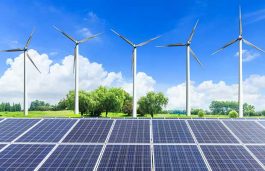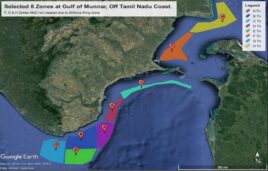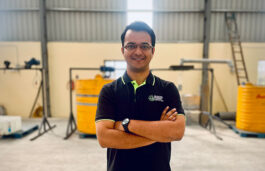Highlights :
- The report said that a rise from $64 billion in 2022 to nearly $114 billion is expected by 2031.
- The report called, ‘Boom time: what the Inflation Reduction Act (Act) means for US renewables manufacturers’, delves in the efficacy of law with regards to equipment manufacturing expansion.
A new report by Wood Mackenzie says that the Inflation Reduction Act (IRA), a Biden law that accelerates renewables and decarbonisation in the US, will significantly boost annual investment into renewable energy deployment in the region. It said that a rise from $64 billion in 2022 to nearly $114 billion is expected by 2031.
The report by Wood Mackenzie called, ‘Boom time: what the Inflation Reduction Act (Act) means for US renewables manufacturers’, delves in the efficacy of law with regards to equipment manufacturing expansion. It said that upcoming guidance on implementation of the IRA will influence the scale of growth in the sector.
Daniel Liu, lead author of the Wood Mackenzie report, said, “The IRA will completely reshape the renewables supply chain in the US, incentivising the reopening of shuttered facilities as well as provide opportunities to build entire equipment supply chains from scratch.”
According to the Wood Mackenzie report, two key provisions of the IRA are likely to be game-changing for renewables equipment manufacturers. First, the Act provides a tax credit, known as the advanced manufacturing production credits (AMPC), for US-made renewable equipment. And second, the Act incentivises developers of US renewable projects to purchase domestically produced equipment by providing an additional tax credit if they meet domestic content requirement (DCR) thresholds.
Wood Mackenzie said that to qualify, 40% of all equipment must be US-manufactured on projects installed before 2025, 20% for offshore wind. This rises to 55% after 2026, 2027 for offshore wind.
Wind Blowing In Support Of OEMs
The lead author of report mentioned, “We expect the US onshore wind manufacturing community to take full advantage of the AMPC. The credits will help original equipment manufacturers (OEMs) reverse declining equipment sales margins in the short term and incentivise investment in manufacturing capacity.”
Wood Mackenzie said that the US has enough manufacturing capacity to supply most domestic demand for turbine equipment to 2031, though the industry faces a near-term shortage of US-produced equipment. This creates an opportune pricing environment for manufacturers, as not all developers will be able to meet DCR thresholds within the Act.
Developers can potentially meet pre-2025 DCR thresholds with US-manufactured wind turbine components, such as domestic foundations, towers, and balance-of-plant equipment. Turbine blades will help developers reach the 55% threshold after 2026.
Challenges in Solar Sector
Wood Mackenzie also mentioned that utility solar PV has a somewhat foggier outlook and with such a small solar manufacturing base currently in the region, fully meeting US solar needs with domestic equipment will be more challenging than other sectors.
The report finds that PV panel manufacturers face considerable challenges when it comes to developing a self-sufficient domestic manufacturing capability. US manufacturing costs are 16-33% higher than imported equipment, but the AMPC will help close this gap.
What Spurs Investment
The Internal Revenue Service (IRS) will provide eligibility requirement guidance on how to access support in the form of tax credits, which will be a critical factor for investment decisions by the manufacturing community, finds the report.
Liu held, “The decision to invest in equipment manufacturing capacity expansion depends on the interplay of three factors. First, the cost of manufacturing equipment in the US compared with imports, taking into account the benefits the AMPC provides. Second, the expected supply/demand imbalance for renewables equipment, and finally, specific guidance from the IRS on what constitutes domestically produced equipment.”


























